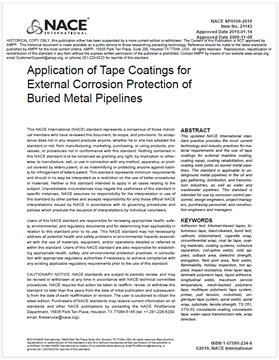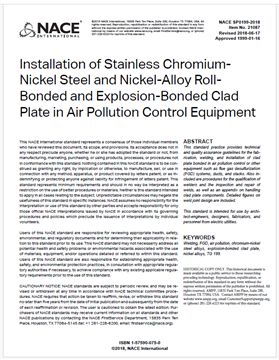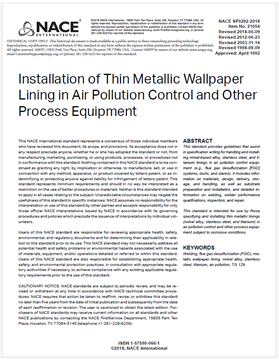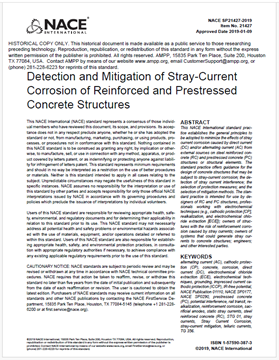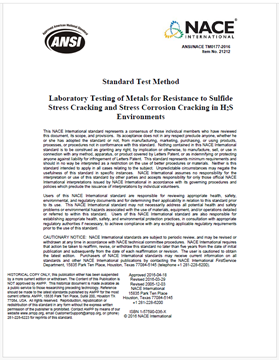Search
Materials Selection and Design
View as
Sort by
Display
per page
NACE Publication 5A171-1995, Materials for Receiving, Handling, and Storing Hydrofluoric Acid
Product Number:
24057-1995
Publication Date:
1995
$179.00
NACE Publication 5A171-2007, Materials for Storing and Handling Commercial Grades of Aqueous Hydrofluoric Acid and Anhydrous Hydrogen Fluoride.
Product Number:
24057-SG
Publication Date:
2007
$179.00
NACE Publication 8X194-2006-SG, Materials and Fabrication Practices for New Pressure Vessels Used in Wet H2S Refinery Service
Product Number:
24179-SG
ISBN:
8X194 Materials
Publication Date:
2006
$109.00
NACE Publication 8X294-2013-SG, "Review of Published Literature on Wet H2S Cracking of Steels Through 1989"
Product Number:
24185-SG
Publication Date:
2013
$109.00
NACE SP0109-2019, Application of Tape Coatings for External Corrosion Protection of Buried Metal Pipelines
Product Number:
21143-SG
Publication Date:
2019
$179.00
NACE SP0199-2018, Installation of Stainless Chromium-Nickel Steel and Nickel-Alloy Roll-Bonded and Explosion-Bonded Clad Plate in Air Pollution Control Equipment
Product Number:
21087-SG
Publication Date:
2018
$179.00
NACE SP0292-2018, Installation of Thin Metallic Wallpaper Lining in Air Pollution Control and Other Process Equipment
Product Number:
21054-SG
Publication Date:
2018
$179.00
NACE SP0499-2012 "Corrosion Control and Monitoring in Seawater Injection Systems"
Product Number:
21237-SG
Publication Date:
2012
$179.00
NACE SP21412-2016/SSPC-CPC 1, Corrosion Prevention and Control Planning
Product Number:
21412-SG
ISBN:
1-57590-356-3
Publication Date:
2016
$179.00
NACE SP21427-2019 “Detection and Mitigation of Stray-Current Corrosion of Reinforced and Prestressed Concrete Structures”
Product Number:
21427-SG
Publication Date:
2019
$179.00
NACE TM0177-2016, Laboratory Testing of Metals for Resistance to Sulfide Stress Cracking and Stress Corrosion Cracking in H2S Environments
Product Number:
21212-SG
Publication Date:
2016
$179.00






